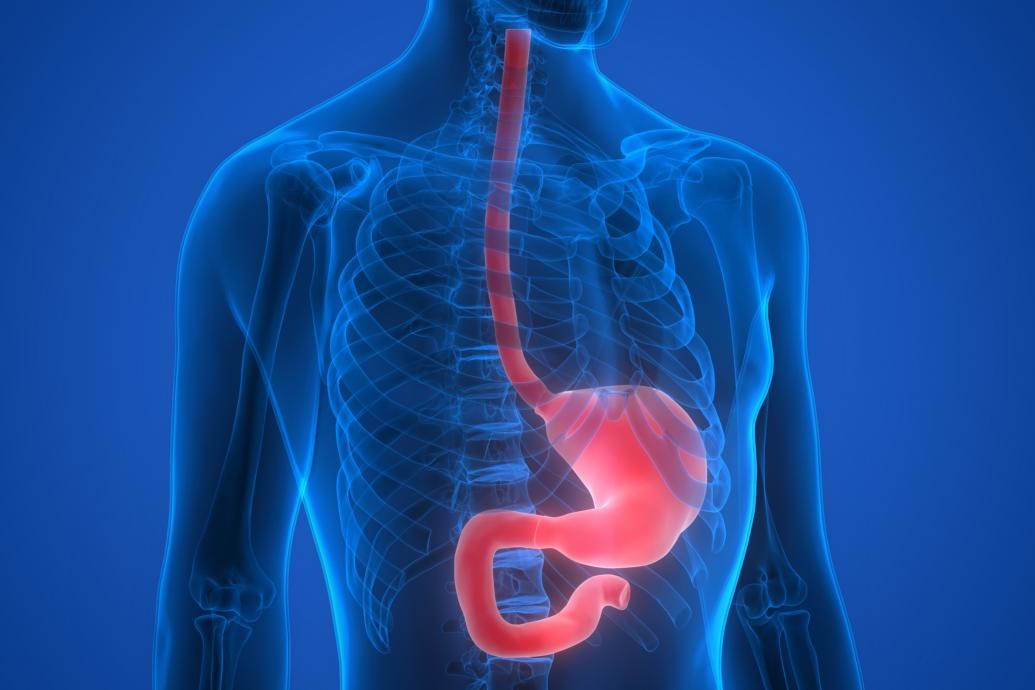
Oesophageal spasms, pain behind the sternum the main symptom
Oesophageal spasms: a pain in the chest, which you may feel while doing physical activity, could be interpreted as a warning sign of heart disease
Instead, it may be a symptom of a problem in the oesophagus where its motility is altered.
This condition is known as diffuse oesophageal spasm.
Abnormal contractions, the typical sign of oesophageal spasms
The oesophagus is an organ about 25 centimetres long, located in front of the spinal column, which connects the pharynx to the stomach and is essential for the food to continue the digestive process that began in the mouth.
After swallowing, what has been swallowed passes through the oesophagus into the stomach.
The oesophageal musculature, striated proximally and smooth distally, is made up of an inner layer of circular bundles and an outer layer of longitudinal layers which, by means of a propulsive contraction (peristalsis), allow the swallowed food to move down the oesophagus.
When these contractions are altered and occur involuntarily, we have diffuse oesophageal spasm.
Contractions are usually simultaneous and prolonged, very dynamic.
Often, the function of the cardia, the lower oesophageal sphincter, which is located between the last part of the oesophagus and the stomach, is also altered.
Symptoms of oesophageal spasms
Diffuse oesophageal spasm is not a very common condition, but is more common than oesophageal achalasia, a more serious condition affecting the oesophagus.
It is characterised by the presence of increased tone in the lower oesophageal sphincter and the absence of physiological peristalsis in the oesophageal body.
Over the years, oesophageal spasm can evolve into this pathology.
Patients with diffuse oesophageal spasm complain of retrosternal pain, even at night, associated with dysphagia, i.e. a sensation of difficult swallowing, following the ingestion of food or liquids (especially if very hot or very cold).
This chest pain may also occur without dysphagia, for example when the patient is engaged in physical activity, and may suggest angina pectoris.
Also known as corkscrew oesophagus because of the radiological image seen after a barred meal, oesophageal spasm has causes that are unknown.
A distinction is made between a primary and a secondary form of the disease.
In the latter case, the disease is often associated with gastro-oesophageal reflux disease.
Diagnosis and treatment of oesophageal spasms
In order to diagnose this disease, in addition to a medical examination with an adequate history and evaluation of symptoms, certain instrumental tests are required.
X-ray with contrast medium is useful, but can often be negative, so manometry is necessary to observe the pressure and movements of the oesophagus and the cardia through a small tube inserted into the oesophagus.
Instrumental examinations are also important to exclude the presence of gastroesophageal reflux disease.
Treatment of the primary form is not straightforward: it involves the use of nitrates and calcium channel blockers, which can reduce symptoms by helping to relax the muscles, but usually have a transient effect.
In some cases, injection of botulinum toxin into the lower oesophageal sphincter may be indicated.
In more difficult cases, the patient undergoes surgery to dissect the circular muscle layer and reduce contractions (surgical myotomy).
Treatment of the secondary form also involves the use of anti-reflux therapy.
Read Also:
Bronchoscopy: Ambu Set New Standards For Single-Use Endoscope
First Time Ever: Successful Operation With A Single-Use Endoscope On Immunodepressed Child
Diagnosis And Treatment: What Is Ecoendoscopy?
Gastroesophageal Reflux: Causes, Symptoms, Tests For Diagnosis And Treatment


